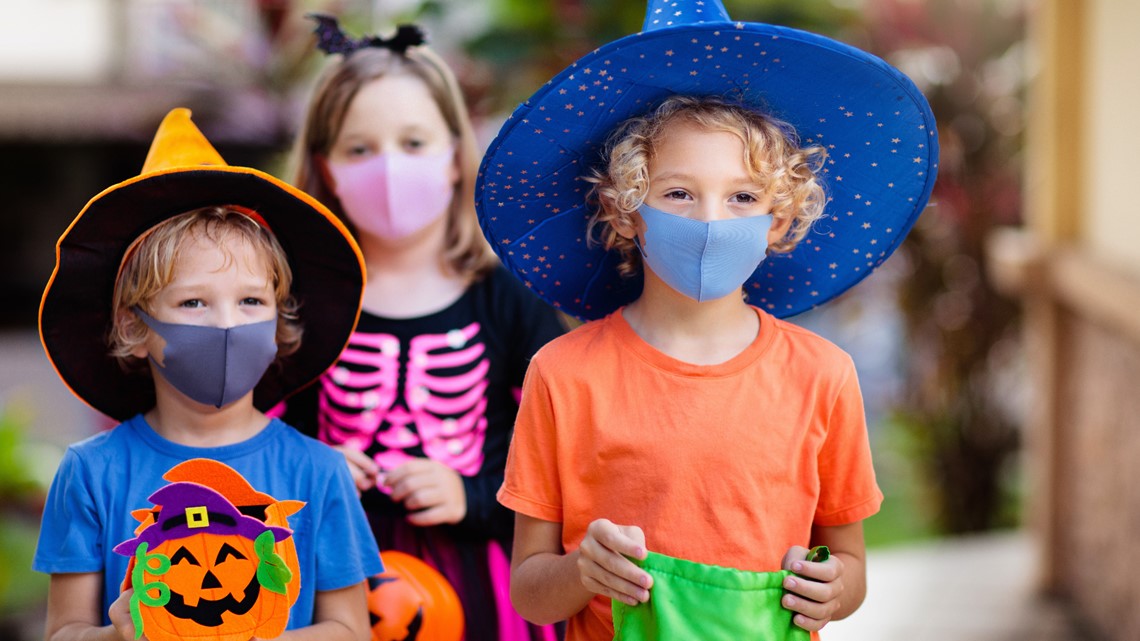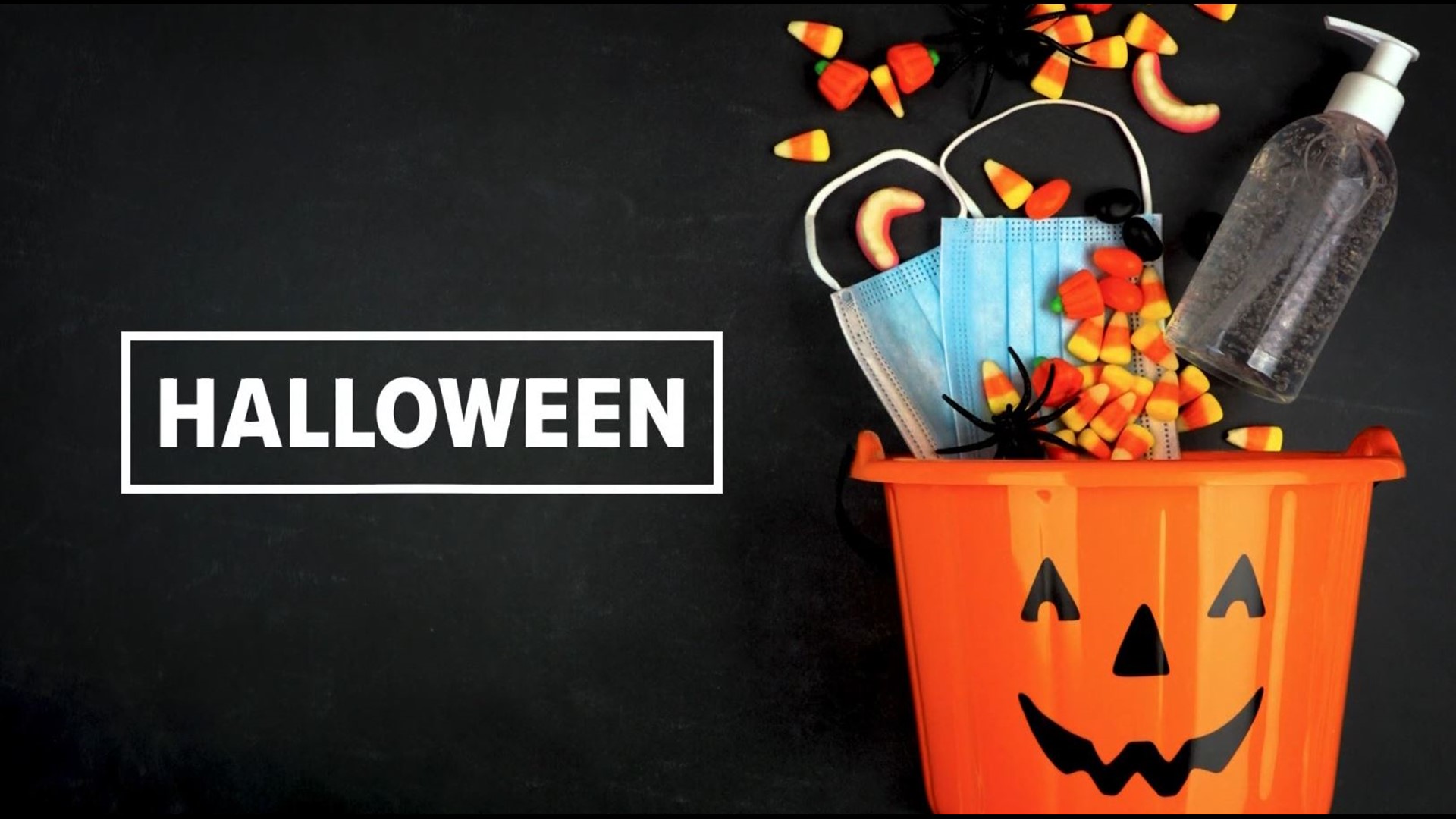WASHINGTON — Halloween is right around the corner, and 2020 has been an unusual year with a global pandemic upending summer and now fall and winter holiday plans.
For the first time, the Centers for Disease Control and Prevention has issued guidance and steps for Americans to take to safely celebrate Halloween and Día de los Muertos.
The CDC says its guidance is meant to supplement, but not replace any state or local health and safety laws.
“Halloween has always been a magical time for our children and everyone loves to be able to take our kids trick-or-treating, but this year is going to be different,” Dr. Stanley Spinner, Vice President and Chief Medical Officer of the Texas Children’s Pediatrics & Texas Children’s Urgent Care, told KVUE. “Being able to just trick-or-treat at your neighbors’ doors up close really is not a recommendation due to COVID.”
For most people, the new coronavirus causes mild or moderate symptoms. For some, especially older adults and people with existing health problems, it can cause more severe illness, including pneumonia and death.
The United States has more than 8.7 million confirmed cases of COVID-19, according to data from Johns Hopkins University.
As of Wednesday, the U.S. had more than 226,000 deaths from the virus. Worldwide, there are more than 44 million confirmed cases with more than 1.1 million deaths.
Quick Tips
WASH YOUR HANDS often and with soap and water for at least 20 seconds. The CDC says this should be done after someone has been in a public place, after blowing their nose, coughing or sneezing. If soap and water aren't available, hand sanitizer that contains at least 60% alcohol will work just as well.
The CDC encourages everyone to continue wearing cloth masks in public. It said that costume masks should not be used as a substitute unless it's made with two or more layers of "breathable fabric that covers your mouth and nose and doesn’t leave gaps around your face."
If anyone thinks they have been exposed during a holiday event, they should take extra precautions like staying home as much as possible for 14 days, avoid being around people and consider getting tested for the coronavirus.
The CDC noted that events, where screaming will likely occur, should have more distance between people. The greater the distance, the lower the risk of spreading a respiratory virus.
Holiday Gatherings
The first step to help reduce the spread of the virus is to "assess current COVID-19 levels in your community to determine whether to postpone, cancel, or limit the number of attendees," the CDC said.
Health officials recommend celebrating virtually or only with family members, which poses only a low risk of spreading the virus. People who shouldn't attend a Halloween gathering this year include those with or exposed to the coronavirus and people who have an increased risk for severe illness. The CDC explains that large gatherings of families and friends, crowded parties and travel may put people at increased risk for COVID-19.
Dr. Spinner said the holiday isn't totally ruined because family units within a household can still do fun activities together to keep the kids entertained. If families get together with people outside their household, hosting the event outside is highly recommended.
If someone is hosting a Halloween party or gathering, even amid the virus, the CDC asks that people consider the following steps to keep everyone safe:
- Host outdoor activities rather than indoor activities
- Try and limit guests to just people in the local area
- Limit the number of guests as much as possible
- Encourage guests to wear masks and use hand sanitizer
- Ask guests to "strictly avoid contact with people outside of their households for 14 days before the gathering"
If someone develops COVID-19 symptoms or tests positive after a party, they should immediately contact the host and others that attended the event.
Lower Risk Halloween Activities
As a safer alternative to holiday bashes, the CDC has released a list of low-risk activities that can help prevent the spread of the coronavirus. It includes:
- Carving or decorating pumpkins with members of your household
- Carving or decorating pumpkins outside, at a safe distance, with neighbors or friends
- Decorating your house, apartment, or living space
- Doing a Halloween scavenger hunt where children are given lists of Halloween-themed things to look for while they walk outdoors from house to house admiring Halloween decorations at a distance
- Having a virtual Halloween costume contest
- Having a Halloween movie night with people you live with
- Having a scavenger hunt-style trick-or-treat search with your household members in or around your home rather than going house to house
Moderate Risk Halloween Activities
The CDC's list of moderate risk Halloween activities that could have more potential to spread the coronavirus:
- Participating in one-way trick-or-treating: Individually wrapped goodie bags and lined them up for families to grab and go while social distancing
- Having a small group, outdoor, open-air costume parade where people are distanced more than 6 feet apart
- Attending an outdoor costume party with masks and social distancing
- Going to an open-air, one-way, walk-through haunted forest
- Visiting pumpkin patches or orchards where people use hand sanitizer before touching pumpkins or picking apples, wearing masks is encouraged or enforced, and people are able to maintain social distancing
- Having an outdoor Halloween movie night
High Risk Halloween Activities
According to the CDC, these activities around Halloween could increase someone's chances of becoming infected by the coronavirus:
- Participating in traditional trick-or-treating where treats are handed to children door to door
- Having trunk-or-treat where treats are handed out from trunks of cars lined up in large parking lots
- Attending crowded indoor costume parties
- Going to an indoor haunted house where people may be crowded, screaming
- Going on hayrides, tractor rides with people who are not in your household
- Using alcohol or drugs, which can cloud judgment and increase risky behaviors
- Traveling to a fall festival that is not in your community
A NORC survey found that trick-or-treating will be significantly down in 2020. The survey said that just 12 percent of U.S. households will go trick-or-treating this year, compared to 24 percent who went door-to-door last year. There's also fewer families who plan to hand out candy.
Food and Drink Safety Tips
Right now, there is no evidence that suggests handling food or eating is associated with spreading the respiratory disease, according to the CDC. However, COVID-19 could spread if someone touches a surface or object, including food, food packaging or utensils where respiratory droplets have landed then they touch their face, nose or mouth.
The CDC released a list of suggestions for people to have good hygiene to reduce the risk of spreading germs around food and drinks:
- Wash hands with soap and water for at least 20 seconds
- Instead of potluck, encourage everyone to have their own drinks and food
- Limit people around the food preparation area
- Wear a mask while preparing food or serving others
- Use single-use options or identify one person to serve sharable items
- Avoid any self-serve food or drink options



